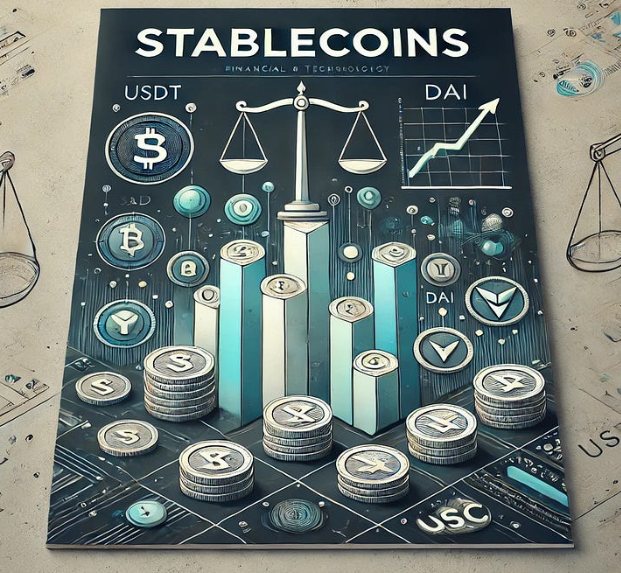bbc.towzdog.com – How Stablecoins Work: A Comprehensive Guide In the rapidly evolving world of cryptocurrencies, stablecoins have emerged as a vital innovation that bridges the gap between traditional finance and digital assets. Understanding how stablecoins work is essential for anyone looking to navigate the complex landscape of cryptocurrency investment and use. This article will explore the mechanics of stablecoins, their types, benefits, challenges, and their role in the financial ecosystem.
What Are Stablecoins?
Definition of Stablecoins
Stablecoins are cryptocurrencies designed to maintain a stable value by pegging them to a reserve of assets, typically fiat currencies like the US dollar, or commodities such as gold. This stability aims to provide the benefits of cryptocurrency—such as fast transactions and low fees—while minimizing the volatility commonly associated with digital assets like Bitcoin and Ethereum.
The Importance of Stablecoins
Stablecoins serve several essential functions in the cryptocurrency ecosystem:
- Facilitating Transactions: They enable quick and efficient transactions without the volatility that can deter the use of traditional cryptocurrencies.
- Providing a Safe Haven: During market downturns, investors often turn to stablecoins as a way to preserve value.
- Enabling Decentralized Finance (DeFi): Stablecoins are integral to the DeFi ecosystem, allowing users to lend, borrow, and earn interest on their assets in a stable currency.
Types of Stablecoins
1. Fiat-Collateralized Stablecoins
Fiat-collateralized stablecoins are backed 1:1 by a reserve of fiat currency. For every stablecoin issued, an equivalent amount of the fiat currency is held in reserve.
Examples:
- Tether (USDT): The most widely used stablecoin, Tether claims to be backed by a reserve of USD. It is widely used across exchanges and in trading pairs.
- USD Coin (USDC): Issued by Circle and Coinbase, USDC is also pegged to the US dollar and is fully backed by reserves, regularly audited for transparency.
2. Crypto-Collateralized Stablecoins
Crypto-collateralized stablecoins are backed by other cryptocurrencies instead of fiat. These stablecoins are often over-collateralized to account for the volatility of the backing assets.
Examples:
- Dai (DAI): Created by MakerDAO, Dai is a decentralized stablecoin that is collateralized by Ethereum and other cryptocurrencies. Its stability is maintained through smart contracts and governance mechanisms.
- sUSD: This is another example of a crypto-collateralized stablecoin created by Synthetix, allowing users to mint sUSD using collateral in the form of SNX tokens.
3. Algorithmic Stablecoins
Algorithmic stablecoins use algorithms to control their supply and demand, without being backed by collateral. The goal is to maintain price stability through automated mechanisms that adjust the supply of the stablecoin.
Examples:
- Ampleforth (AMPL): Instead of being pegged to a fiat currency, Ampleforth adjusts its supply daily based on demand, aiming to stabilize its price around $1.
- Terra (LUNA): Terra uses a dual-token system, where the stablecoin (TerraUSD) is pegged to a basket of fiat currencies, and the governance token (LUNA) absorbs price volatility through smart contracts.
How Stablecoins Work
Mechanisms of Stability
Stablecoins utilize various mechanisms to maintain their peg to the underlying asset. Here are the main approaches:
1. Collateralization
For fiat-collateralized and crypto-collateralized stablecoins, the backing asset is held in reserve to ensure that users can redeem their stablecoins at the pegged value. The process typically works as follows:
- When a user purchases stablecoins, an equivalent amount of fiat or crypto is deposited into a reserve.
- To redeem stablecoins, users can exchange them back for the underlying asset at a 1:1 ratio.
2. Smart Contracts
Algorithmic stablecoins rely on smart contracts to automate the supply adjustment process. For example:
- If the price of the stablecoin rises above its peg, the algorithm will increase the supply of stablecoins to bring the price back down.
- Conversely, if the price falls below the peg, the algorithm will reduce the supply, thereby increasing demand.
Role of Auditing and Transparency
For fiat-collateralized stablecoins, transparency is critical. Many projects undergo regular audits to verify that their reserves match the circulating supply of stablecoins. This practice builds trust with users and helps maintain the peg to the underlying asset.
Benefits of Stablecoins
1. Reduced Volatility
One of the primary benefits of stablecoins is their ability to mitigate volatility. Unlike traditional cryptocurrencies, stablecoins provide a more predictable value, making them suitable for everyday transactions and savings.
2. Accessibility
Stablecoins are accessible to anyone with an internet connection, enabling individuals in regions with unstable currencies to store value and transact without the need for traditional banking systems.
3. Efficient Transactions
Stablecoins facilitate faster and cheaper transactions compared to traditional financial systems. They can be transferred globally within minutes and often come with lower fees than international bank transfers.
4. Integration with DeFi
Stablecoins play a crucial role in the DeFi ecosystem, providing liquidity for lending, borrowing, and trading. They allow users to earn interest on their holdings or leverage their assets in a decentralized manner.
Challenges Facing Stablecoins
1. Regulatory Scrutiny
As stablecoins gain popularity, they are facing increased regulatory scrutiny from governments around the world. Regulators are concerned about the potential risks stablecoins pose to financial stability, particularly if they are widely adopted without adequate oversight.
2. Centralization Risks
Fiat-collateralized stablecoins often involve a central entity holding reserves, raising concerns about transparency and the potential for mismanagement. Users must trust these entities to uphold their promises.
3. Market Dynamics
Algorithmic stablecoins can be susceptible to market dynamics that challenge their stability. If a significant drop in demand occurs, it may be difficult for these stablecoins to maintain their peg, leading to potential losses for users.
The Future of Stablecoins
Emerging Trends
The future of stablecoins looks promising, with several trends shaping their evolution:
1. Increased Adoption
As more businesses and consumers recognize the benefits of stablecoins, adoption is expected to grow. This trend is evident in the rising number of merchants accepting stablecoins as payment.
2. Integration with Central Bank Digital Currencies (CBDCs)
Many central banks are exploring the possibility of launching their own digital currencies. Stablecoins could play a role in the broader ecosystem, potentially serving as a bridge between private digital currencies and CBDCs.
3. Innovation in DeFi
The DeFi space is likely to continue evolving, with stablecoins at the forefront. Innovations in lending platforms, yield farming, and decentralized exchanges are expected to drive further demand for stablecoins.
Conclusion
In summary, understanding how stablecoins work is essential for anyone interested in the cryptocurrency landscape. These digital assets provide a solution to the volatility that often plagues cryptocurrencies, enabling efficient transactions, promoting financial inclusion, and facilitating the growth of DeFi.
As the market evolves, the role of stablecoins will likely expand, presenting new opportunities and challenges. For those looking to stay informed about the latest developments in cryptocurrency and stablecoins, you can visit CoinDesk for ongoing updates and insights.
Final Thoughts
Stablecoins represent a significant advancement in the cryptocurrency space, combining the benefits of digital assets with the stability of traditional currencies. As the ecosystem continues to grow and mature, stablecoins are poised to play an increasingly important role in the future of finance.




